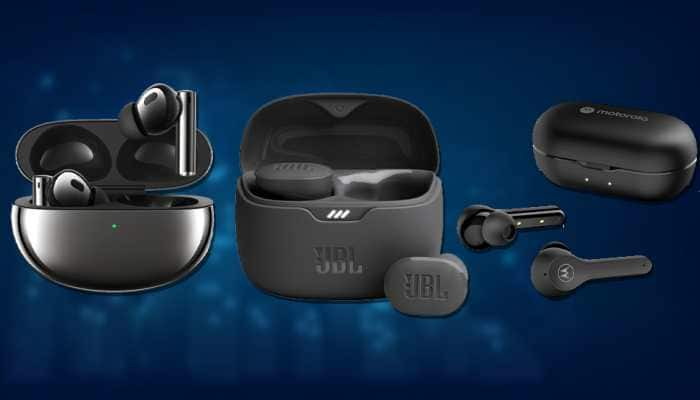Micro-Influencers vs Macro-Influencers: Finding Right Fit For Your Brand
In 2018, the social media influencer market hit $4.6 billion in size — taking the marketing world by storm as an innovative new road to reach target audiences. Today, in 2024, experts predict the social media influencer market to top $24 billion.
Trending Photos
)
As the years pass, the influencer marketing scene takes a recognisable shape, one that can split into four categories: mega-influencers, macro-influencers, micro-influencers, and nano-influencers.
Confluencr - India's Largest Influencer Marketing Agency, is a very good example of learning how to work with any type of influencer. And if you’re looking to dive into the lucrative world of influencer marketing, and learn essentially the differentiation from a micro-influencer to micro-influencer, then look out for Confluencr.
The 4 Types of Social Media Influencers
Well, to begin with, there are 4 types of Social Media Influencers:
| Influencer Type | Number of Followers |
| Mega Influencer | 1 Million+ |
| Macro Influencer | 100,000 - 1 Million |
| Micro-Influencer | 1,000 - 100,000 |
| Nano Influencer | Less than 1,000 |
Out of these today we are focusing on Macro and Micro-influencers. And also see which category according to Confluencr is the best fit for your brand.
“Sahiba Dhandania the founder and CEO of Confluencr said in an interview that - I believe that both micro-influencers and macro-influencers have their place in a well-rounded influencer strategy. Micro-influencers offer highly engaged niche audiences and cost-effective collaborations, making them ideal for brands targeting specific demographics or looking to maximise ROI.
On the other hand, Macro-influencers provide unparalleled reach and visibility, which can be beneficial for building brand awareness and driving mass-scale engagement.
The key is to align your influencer selection with your campaign goals and target audience. A balanced approach utilizing both micro- and macro-influencers can be highly effective in achieving a range of marketing objectives.”
Let’s look at the pros and cons of macro-influencers vs. micro-influencers to find the best option for your brand.
What is macro-influencer marketing?
Macro-influencer marketing is collaborating with influencers with a large following, typically ranging from several hundred thousand to millions of followers, to promote products, services, or campaigns. These influencers have gained significant recognition on social media platforms like and have a broader reach, in many cases, than some brands. For instance, Indian influencers on Instagram have a huge user base of approx 450 M+ users creating a massive market to influence.
Confluencr, as an agency, believes that due to macro-influencers' large follower base, they frequently command higher audiences for their content. Brands use macro-influencers to gain visibility, tap into built audiences, and increase engagement on a larger and better scale.
But there are considerations. Brand authenticity is more important today than ever before, and the authenticity of endorsements from macro influencers may sometimes be perceived as less genuine than those from influencers with smaller followings.
Pros of macro-influencers:
- Better Reach: Brands can expect significant exposure from their large following.
- Enhanced credibility: Associating with a well-known face can increase a brand's trust score.
- High engagement: According to data, collaborations with influencers reach audiences a lot more, resulting in a 4.9x increase in engagement compared to brands that do not collaborate.
Cons of macro-influencers:
- High cost: Collaborations with macro-influencers can be very expensive.
- Less authenticity: Larger influencers might sometimes prioritise commercial interests over genuine endorsements.
- Brand perception: If the promotional effect doesn't work out for the brand in some way, it can sometimes backfire.
What is micro-influencer marketing?
Micro-influencer marketing is the practice of partnering with individuals who have a relatively smaller, yet highly engaged and niche-focused following on social media platforms to promote products, services, or campaigns. Micro-influencers typically have follower counts ranging from approximately 1,000 to 100,000.
According to the experts at Confluencr, despite having a smaller reach than macro-influencers or celebrities, micro-influencers frequently have a closer, more genuine relationship with their audience. This can lead to increased engagement and perceived authenticity in their recommendations. Brands work with micro-influencers to reach out to specific communities or demographics, leveraging the trust and rapport they have built with their followers.
“Chaitanya as the Vice President of Confluencr said in an interview that - I believe micro-influencer marketing is a highly effective strategy for brands looking to drive authentic engagement and reach niche audiences. Micro-influencers typically have 1,000 to 100,000 followers and excel at building genuine connections with their communities. Their content achieves 7-20% engagement rates on average, far exceeding the 5% typical of macro-influencers. Collaborating with multiple micro-influencers allows brands to tap into diverse niches and demographics at a lower cost compared to macro-influencers.”
Micro-influencers are, more or less, the person next door. Their more modest follower counts (ranging from a few thousand to about a hundred thousand) make them relatable and trustworthy.
Pros of micro-influencers:
- Genuine endorsements: Their promotions feel more like genuine recommendations than paid advertisements.
- High engagement rates: Micro-influencers typically achieve higher engagement rates than other forms of influencers, accounting for about 91% of engagement on sponsored posts on Instagram.
- Cost-effective: Collaborations are considerably cheaper, offering better ROI.
Cons of micro-influencers:
- Limited reach: Because their follower count is lower, compared to their counterparts, the reach of their posts can also be limited.
- Requires more management: It takes more planning or a specific influencer marketing solution to engage several micro-influencers to equal the reach of a macro influencer.
- Too many sponsors: Smaller micro-influencers (up to 10,000 followers) are more likely to post sponsored content, which can have an impact on audience engagement.
Which type of influencer could be your perfect fit?
Your decision to collaborate with an influencer must depend on your brand's immediate needs.
- Visibility over conversions: If you want to reach a large number of people and have the spending funds, celebrities or macro-influencers are your best options.
- Conversions over visibility: If your current need as a brand is engagement and conversions, micro-influencers, with their genuine endorsements and high engagement rates, will be your best bet.
- Budget Allocation: Start-ups or smaller businesses may allocate a higher percentage of their marketing budget to influencer marketing (e.g., 20-30%) to quickly build brand awareness and reach new audiences, whereas established brands may allocate a smaller percentage (e.g., 10-20%) but focus on strategic partnerships with influencers who align closely with their brand values and target demographics.
- Industry Based: Different industries have varying levels of competition and consumer behaviour. Some industries, like fashion, beauty, and lifestyle, typically allocate a significant portion of their marketing budgets to influencers due to the visual and trend-driven nature of their products, whereas Industries like healthcare, finance, and B2B may allocate a smaller percentage to influencers, focusing more on content marketing, thought leadership, and direct lead generation.
Confluencr believes though each type of influencer has its advantages, it’s rather more important to check the needs of your brand and audience with your business objectives. Ultimately, there isn’t a one-size-fits-all answer. And when the situation is doubtful or a bit dicey, it’s better to experiment with both. Ultimately, there isn’t a one-size-fits-all answer.
How can you get started with influencer marketing?
Brands must adapt and evolve in the ever-changing influencer marketing scene. It's not about picking one over the other, but about optimising the combination to meet your business objectives. As the influencer marketing landscape evolves, brands that effectively tailor their strategies will thrive.
Confluencr could be the first step for brands to dip into influencer marketing. With the constant change and continuous moving in the influencer marketing domain. Brands are working with agencies like Confluencr, to bring in change and stability, which is making partnerships and collaborations with all sorts of influencers a lot easier and standardised as time passes.
(This article is part of IndiaDotCom Pvt Ltd’s Consumer Connect Initiative, a paid publication programme. IDPL claims no editorial involvement and assumes no responsibility, liability or claims for any errors or omissions in the content of the article. The IDPL Editorial team is not responsible for this content.)
Live Tv







)
)
)
)
)
)
)
)
)
)
